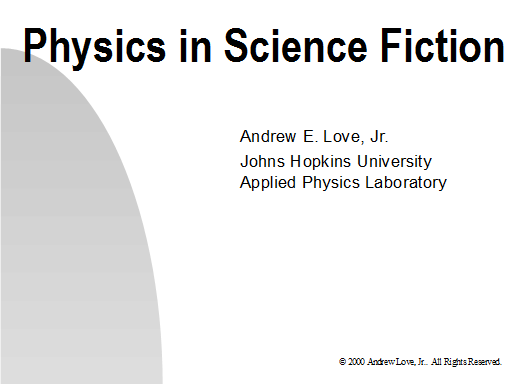
NOTES:
Good afternoon. My name is Andrew Love; in my work I give presentations on a variety of dry topics, so I enjoy the opportunity for something different: the science, and particularly the physics that can be found and played with in various science fiction stories. I was inspired to create this talk after attending the "SF and Education" panels at the 1998 Worldcon; since then I've given versions of this talk at two college campuses and various other places. This version, I've updated in October 2014 in response to some corrections provided by "Catty Nebulart" and some from Dr. Shannon Hall (thanks to both of you, very much!).
I have both a bachelors and a masters degree in electrical engineering, and a masters in applied physics as well, but most of the concepts I'll be discussing require only high school physics to understand and only slightly more advanced mathematics to actually calculate the answers. I have found however that thinking about these SF examples often helps me get more intuition about the physics and sometimes by understanding the physics better I get a better feel for the story too.
Normally when I give this talk I can't assume that my audience knows much about science fiction, so I say a few words about the role of science in science fiction before starting the main body of the talk - i.e. the part of the talk with equations. With a more experienced audience I can skip through those slides pretty quickly.
